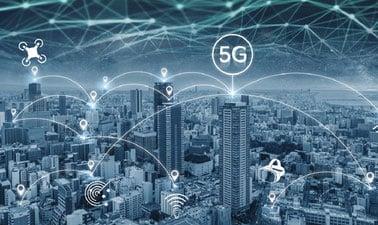MOOC List is learner-supported. When you buy through links on our site, we may earn an affiliate commission.

MOOC List is learner-supported. When you buy through links on our site, we may earn an affiliate commission.
It is a result of the rapid evolution of mobile communications. It will add high reliability and low latency machine-to-machine communications to increased data speeds for broadband communications, for which there are so many active mobile phones today as people on the planet. To do this, 5G incorporates new features in both radio technologies and architecture, which must still continue to evolve in order to provide new applications and services, some of which we have not yet imagined.
One of the keys to this evolution is ultra-dense networks, made up of small cells, known as small cells. With this course we want to present the fundamentals, architecture, key technologies, use cases and evolution of 5G mobile communication systems, with an emphasis on increasing capacity and reducing power that facilitates the deployment of small cells. The course has been prepared by the researchers of the European project TeamUp5G, young and senior researchers working to improve small cells in 5G.
What you'll learn
- The most important technologies that support 5G mobile communications.
- The concepts of ultra-dense networks and small cells in the framework of 5G and its evolution.
- New transmission technologies, and interference management.
- Techniques for the reduction of energy consumption and spectrum sharing.
- 5G use cases, including security and privacy, drones, virtual or augmented reality.
- The use of visible light (LiFi) as a complement to radio.
- Emerging technologies such as the use of Tera Hertz (THz) frequencies or intelligent reconfigurable surfaces.
- The evolution towards 6G.
Syllabus
Module 1 - Ultra-dense networks and small cells
Introduction to ultra-dense networks and the role of small cells in the frame of 5G and its evolution. Introduction to the mobile network, new scenarios and applications, system parameters and requirements, as well as enabling technologies.
Module 2 - New transmission technologies
Explanation of the fundamentals of Massive MIMO and beamforming in conventional and millimeter waves, the importance of channel estimation and the role of non-coherent communications. Multi-packet reception in full-duplex communications and Visible light communications are also explained.
Module 3 - Interference management and energy efficiency
The way to organize scheduling and interference management in 5G and visible light communications and the new cell-free paradigm are explained. The new approaches for energy efficiency, sensing and data gathering are introduced.
Module 4 - Spectrum sharing and carrier aggregation
Explanation of the fundamentals of spectrum sharing and carrier aggregation, the use of licensed and unlicensed access and new Licensed Shared Access. Architectures and algorithms for spectrum and carrier aggregation and the coexistence of Small Cells and Low Power Wide Area Networks for supporting the internet of things (IoT) are explained.
Module 5 - Use cases and prototyping
Interesting use cases of 5G are examined, including privacy and security, AR / VR and immersive media rendering, drones as a part of the communication network and visible light communications, with some details about prototyping.
Module 6 - The future ahead
The most interesting emerging technologies towards 6G are explained and examples of how communications are solving the needs of our society are provided.
MOOC List is learner-supported. When you buy through links on our site, we may earn an affiliate commission.
MOOC List is learner-supported. When you buy through links on our site, we may earn an affiliate commission.
